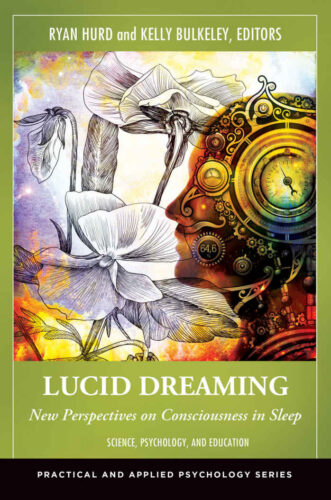 The West Coast has a long history of wildfires, and dreaming about wildfires. A study from the 1991 Oakland Hills Firestorm has important lessons for those of us currently being threatened and harmed by the blazes in California, Oregon, Washington, and elsewhere.
The West Coast has a long history of wildfires, and dreaming about wildfires. A study from the 1991 Oakland Hills Firestorm has important lessons for those of us currently being threatened and harmed by the blazes in California, Oregon, Washington, and elsewhere.
On October 20, 1991, almost exactly two years after the Loma Prieta earthquake struck the Bay Area, a brush fire in the eastern hills of Oakland, California exploded into a racing wall of flame that consumed several residential neighborhoods with shocking speed. Twenty-five people died, hundreds were injured or suffered from smoke inhalation, and more than 3,000 homes and apartments were reduced to ashes.
Two weeks after the fire was finally extinguished, Dr. Alan Siegel, a clinical psychologist from Berkeley, and his colleagues Barbara Baer and Karen Muller initiated a very timely and illuminating study. They recruited three groups of people: 28 who lost their homes, the Fire Survivors; 14 who lived in burn zone but homes were not destroyed, the Fire Evacuees; and 18 people living outside the evacuation zone, the Control Group. All the participants provided an interview, responses to several questionnaires (e.g., the Beck Depression Inventory), and a two-week dream journal. Siegel and his colleagues carefully analyzed all this information, focusing special attention on patterns in their dreams. Their work appeared as a chapter in Deirdre Barrett’s excellent edited work Trauma and Dreams (1996).
Two of Siegel’s findings stand out as potentially helpful for people currently in the West Coast wildfire danger zone.
The first came as a surprise to the researchers:
“An unexpected finding of our study is the profound and largely unacknowledged reactions of the Fire Evacuees—people who lived in the burn zone but whose homes were spared. Their unremitting survivor guilt, depression, intrusive thoughts, and nightmares were more distressing than that of the Fire Survivors.” (161)
Siegel emphasizes the therapeutic significance of this finding. In addition to those who have been directly impacted by a disaster, the “lucky survivors” can suffer terribly, too, in ways they may try to hide or minimize as part of their survivor guilt.
The second important finding is that “post-fire dreams reawakened preoccupations with grief from earlier epochs” (167). The experience of a new trauma has the potential to reactivate memories, feelings, and physiological reactions from previous traumas. This is especially important to recognize when trying to help people find their path towards recovery and healing:
“Of all the factors shaping coping and recovery, one invisible dimension of the Survivors’ and Evacuees’ experience was dominant—the lingering emotional impact of earlier losses, traumas, and deprivations… Those with more profound backgrounds of trauma were more severely affected and slower to recover. Their dreams after the fire and around the anniversary of the fire frequently used the metaphor of their earlier traumas to depict reactions to the Firestorm and its aftermath.” (174)
Siegel’s work highlights a vital insight in caregiving work in the wake of a disaster: the people most vulnerable to psychological suffering from the present event are likely to be those who are carrying unhealed wounds from the past.
There is no getting around the long-term impact of such experiences on everyone involved, and Siegel’s observation about anniversaries is worth underlining. He says “firestorm survivors suffered profound reactions to the impending first anniversary of the fire” (173). This should be kept in mind when planning public memorials and commemorations of a disaster, which different people may experience in very different ways.
Still, there is reason to hope that with time and effective caregiving, recurrent post-traumatic nightmares can gradually change and transform in more positive directions, becoming less fixated on the specific triggering event, more varied and imaginative in form, and generally dreamier in mood and feel. This was a key finding of Ernest Hartmann in his 1984 work Nightmares, to which Siegel refers in his conclusion:
“A series of dreams often shows a progression toward mastery as a trauma is resolved. Nightmares that are like graphic memories of the trauma gradually fade, giving way to dreams less focused on the trauma and more mixed with other concerns.” (176)
This important study by Siegel and his colleagues adds further evidence in support of the idea that greater familiarity with dreaming can have subtle but significant public health benefits. Dreaming is a vital part of our innate crisis-response system, hard-wired into our brains over millions of years of evolution (and presumably many, many wildfires). Promoting more knowledge about dreaming and dream-sharing offers a simple and effective way of strengthening our collective resilience whenever disaster strikes.
Reference:
Alan Siegel, “Dreams of Firestorm Survivors,” in Trauma and Dreams, ed. Deirdre Barrett (Harvard University Press, 1996), pp. 159-176.
Note: this post first appeared in Psychology Today, September 13, 2020.

 The basic patterns of dream content are coming into sharper focus, thanks to new technologies of digital analysis. By using these tools to study large and diverse collections of high-quality dream data, and then making those tools and data publicly available, we can illuminate recurrent frequencies of dream content that others can easily review, replicate, and verify for themselves. The more we know about these basic patterns, the more we can gain helpful insights from people’s dreams regarding their mental and physical health, social relations, cultural interests, and even spiritual beliefs.
The basic patterns of dream content are coming into sharper focus, thanks to new technologies of digital analysis. By using these tools to study large and diverse collections of high-quality dream data, and then making those tools and data publicly available, we can illuminate recurrent frequencies of dream content that others can easily review, replicate, and verify for themselves. The more we know about these basic patterns, the more we can gain helpful insights from people’s dreams regarding their mental and physical health, social relations, cultural interests, and even spiritual beliefs. The Covid-19 pandemic has caused, in addition to a health crisis, an unprecedented crisis of work and education. Many businesses and schools have closed, or soon will; those that survive will not look or function the same after the pandemic as they did before. The only certainty is that the old ways are gone, and new ways must be created.
The Covid-19 pandemic has caused, in addition to a health crisis, an unprecedented crisis of work and education. Many businesses and schools have closed, or soon will; those that survive will not look or function the same after the pandemic as they did before. The only certainty is that the old ways are gone, and new ways must be created.

 Lucid Dreaming: New Perspectives on Consciousness in Sleep (2014)
Lucid Dreaming: New Perspectives on Consciousness in Sleep (2014)